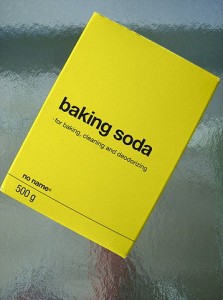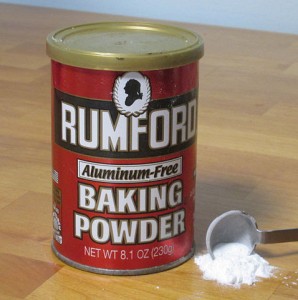Difference Between Baking Powder and Baking Soda
Baking Powder vs Baking Soda
Knowledge about the difference between baking powder and baking soda is very useful in culinary arts as baking soda and baking powder are two leavening agents commonly used in kitchens all over the world. They are added to doughs that release bubbles of carbon dioxide. This CO2 causes dough to rise, and we get to eat delicious baked recipes. But most people remain unsure about the differences between these two leavening agents. What you want is a delicious recipe, and it makes no difference to you whether leavening agent is baking soda or baking powder. But, remember this: it is necessary to know the other ingredients of the recipe before deciding on baking soda or baking powder. This article will explain the differences between baking powder and baking soda so as to help people choose one of the two depending upon requirements.
What is Baking Soda?
Baking soda, as the name implies, is simply sodium bicarbonate. It is a base which when combined with some acid and moisture causes a chemical reaction releasing carbon dioxide that makes dough rise.

When using baking soda, it needs to be added to an acidic mixture such as chocolate, yogurt, buttermilk or honey. Instantly, CO2 bubbles are formed that expand when the recipe is kept in a microwave oven. It is necessary to bake the recipe soon after adding baking soda or otherwise the dough will fall flat.
What is Baking Powder?
On the other hand, baking powder has the acidic ingredient in itself. Baking powder, apart from sodium carbonate, also contains an acid that is required to produce the chemical reaction. This acid is usually cream of tartar. Baking powder just needs moisture to start the formation of carbon dioxide bubbles.

Baking powder is available as single acting powder and double acting powder. When using single acting powder, you have to treat the recipe as you would when using baking soda and bake the recipe immediately. However, in the case of double acting baking powder, carbon dioxide is released in phases, and the recipe can stand for a while. Moreover, you can make your own baking powder in case you do not have it at home but have baking soda in its place. Just add two parts of cream of tartar to one part of baking soda, and you have homemade baking powder ready to make your homemade cookies and cakes.
What is the difference between Baking Soda and Baking Powder?
Baking soda and baking powder are both leavening agents that are used in making recipes. Both start a chemical reaction causing carbon dioxide bubbles to form making the dough rise, but because of their composition, there is some difference in the way they work.
• Baking soda is sodium bicarbonate which is a base, and you need an acid and moisture to produce carbon dioxide bubbles. However, baking powder contains acidic ingredients in addition to baking soda and just needs the addition of moisture to start the reaction.
• If you do not bake the recipe soon after baking soda is added, then the dough will fall flat.
• When using baking powder, you have to bake immediately after adding single acting powder. However, when using double acting powder, the recipe can stand a little while without baking.
• Since baking soda is a base, it tends to make recipes a little bitter unless you add a little buttermilk to counter this bitterness. On the other hand, baking powder contains both the base as well as acid and hence it tends to produce a neutral taste. This is why it is baking powder that is used in the manufacture of biscuits and cakes as sweetness, not bitterness, is what is required.
• Recipes that require baking soda can be made with baking powder, but you cannot substitute baking soda in place of baking powder.
Images Courtesy:
ncG1vNJzZmivp6x7pbXFn5yrnZ6YsqOx07CcnqZemLyue8OinZ%2Bdopq7pLGMm5ytr5Wau26uwKSgp59dpby4sMSrZJqmlGLDtHnBmqKippdiwLCwwGg%3D